Fly Fishing: Too Much Mending Can Ruin Your Drift
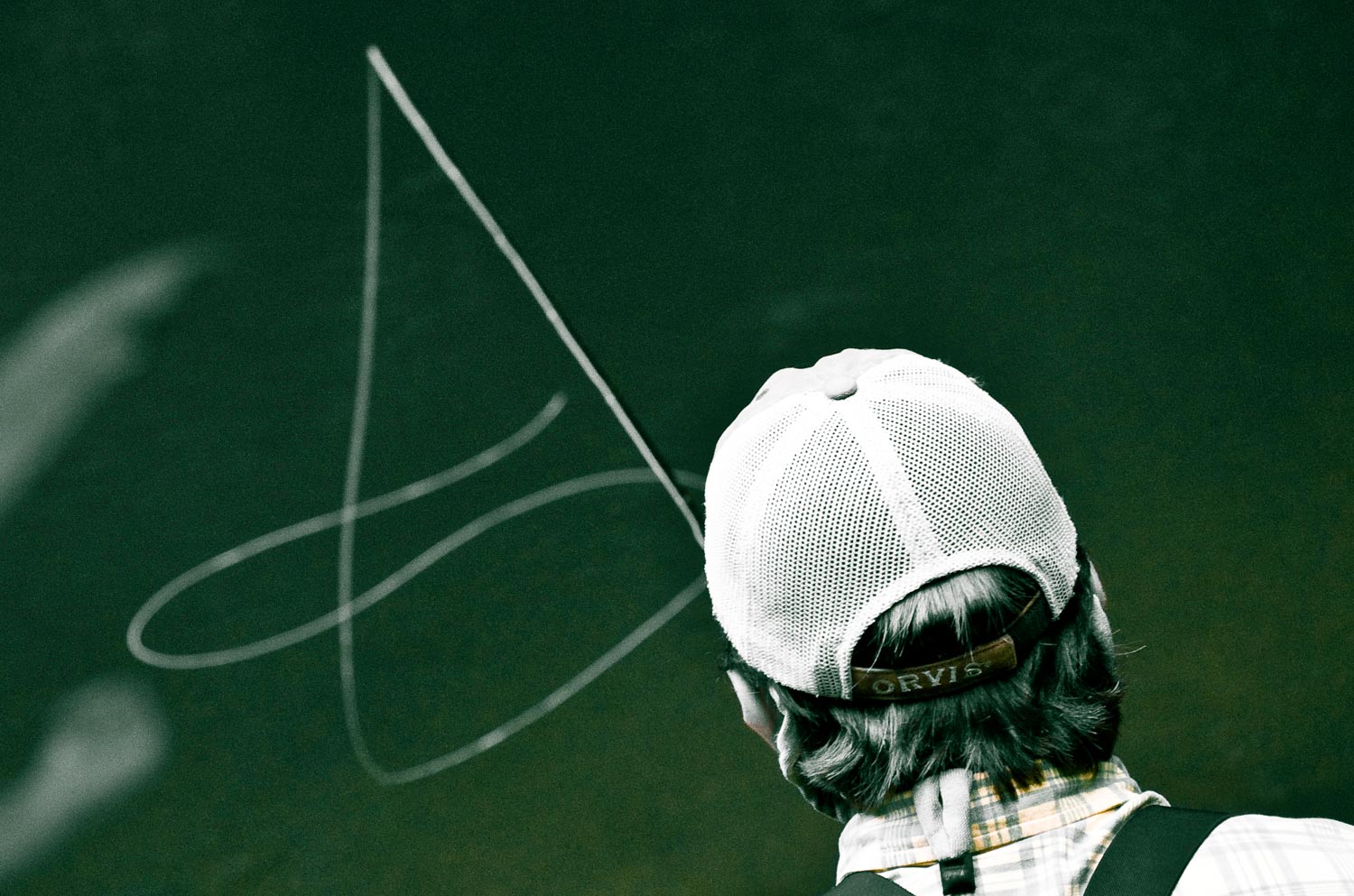
One of the most critical techniques of fly fishing that anglers often lack knowledge in, is understanding how to properly mend fly line during the drift. If I tallied up all the time I spend each day instructing clients on various fly fishing techniques, teaching the art of mending fly line would easily rank number one on the list. I bet I say the word “mend” a thousand times a day. It’s not that difficult to mend fly line, all it takes is a little practice and time on the water to get the hang of it. In my opinion, it’s much easier to learn how to mend than the art of fly casting. The main reason mending takes so long for fly anglers to master is because the timing of the mend, the direction of the mend and the size of the mend can change from one presentation to the next. Two of the biggest mending problems I see on the water is bad technique and mending fly line too much during the drift. When mending is done correctly, you usually only need one or two mends per drift to get the job done.
Read More »The meaning of Fly Shop

By Owen Plair
The local fly shop is a place where lives are changed forever.
It’s a place where you can feel at home and a place that exists solely to help you as an angler. That feeling you get as the door opens and you look around is something that cannot be replaced. Being surrounded by everything you love, and the people who love it as much as you, is what life is all about. Its a place where new adventures start and countless memories are created.
So why would you drive to the local fly shop when you can just buy it online and have it shipped to your house for the same price? Why not just google what flies to buy or what fly line to use? This rod looks cool online, why not just order it? Don’t get me wrong, the internet is a great tool. You can learn a lot and most of the time find what product you’re looking for. Fly fishing is a very small industry and there are few actual fly shop locations. Those few locations are shops which are born from a passion for fly fishing and created for you as an angler to further that obsession. It’s a place that not everyone wants to shop and a place that needs your support as much as you need theirs. Think about a handshake and a smile next time, instead of clicking a check-out button.
Just about 10 years ago I started working at the local fly shop. I was a 16-year old kid trying to make a few dollars to put gas in my car. I knew very little about fly fishing, hell, I didn’t even know what an 8wt was at the time. The door opened and the first customer of the day walked in. I greeted him good morning and asked if I could help him with something. “Do you have any bonefish tippet?,” he asked. In my head I was thinking tip-what?!? “Let me get someone who can help you,” I replied.
I went to the back and got my boss to come help the customer find his “tippet”. As I watched Tony help this customer with tippet and then flies, and then wading boots, and then a new shirt for his trip, I soon learned he wasn’t just selling the customer, he was truly helping him, and creating a friendship by doing it. “You never want to wear Nike tennis shoes wade fishing in the bahamas. These are a few of the flies I used at that lodge a few years ago, tell the ole Pinder Brothers I said hello and have a great trip! ” said Tony.
The customer thanked him with a big smile and handshake of excitement that he was now ready for his upcoming trip after taking the advice from Tony. About two weeks later that customer came back
Read More »Sunday Classic / Fly Fishing Fast Water Chutes for Trout
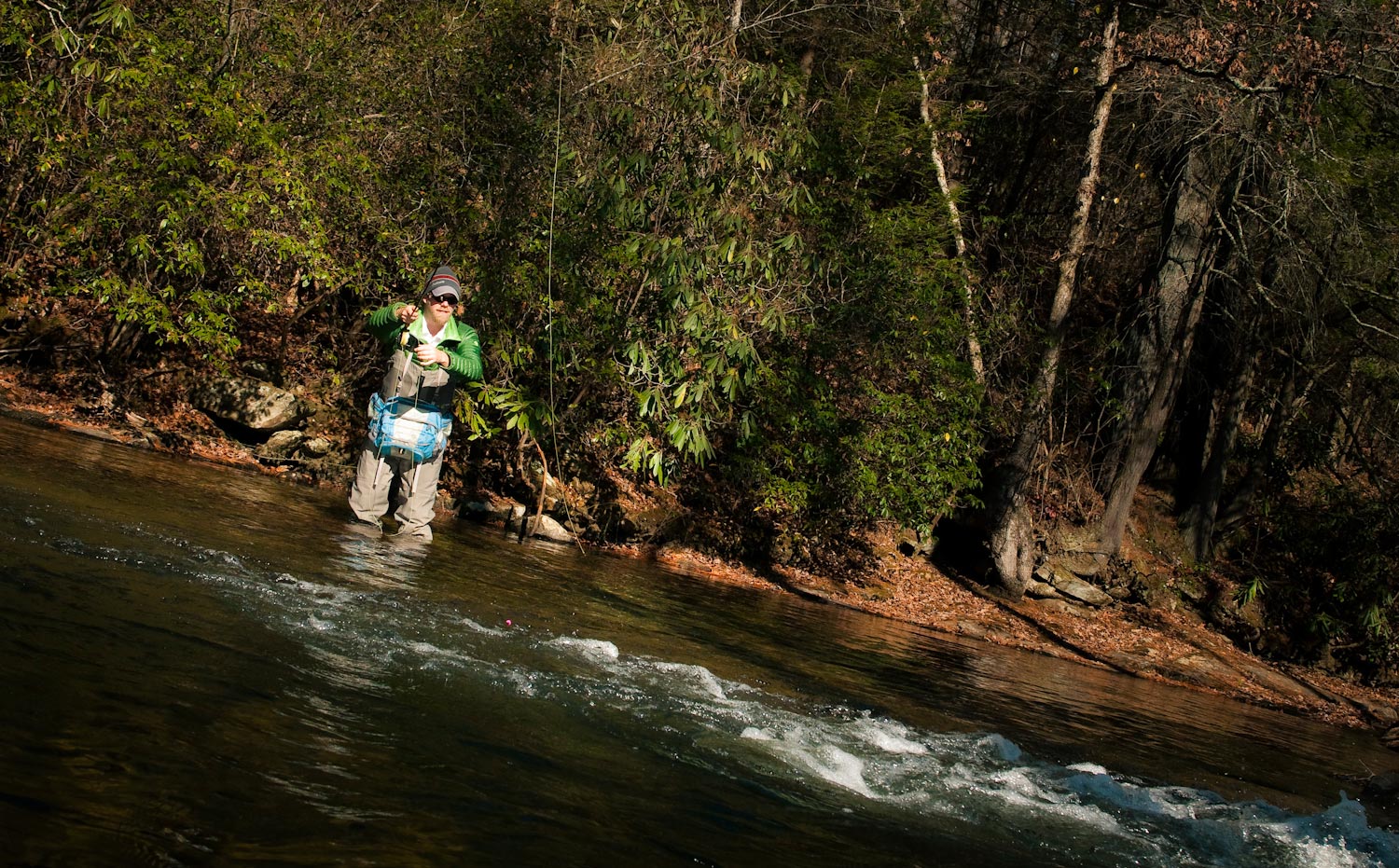
There are multiple ways for anglers to fly fish fast water chutes, but most of the time, I find it most effective to wade to the sides of the chutes, and fly fish perpendicular to them. Doing so, it gives me better control of my drifting flies and improves my line management. Positioning to the side of a chute also improves my stealth, because I’m able to present my flies in front of the trout with just my leader, keeping my fly line out of site. Check out the video below that demonstrates how I prefer to fish fast water chutes.
Read More »Saturday Shoutout / So Many Octobers
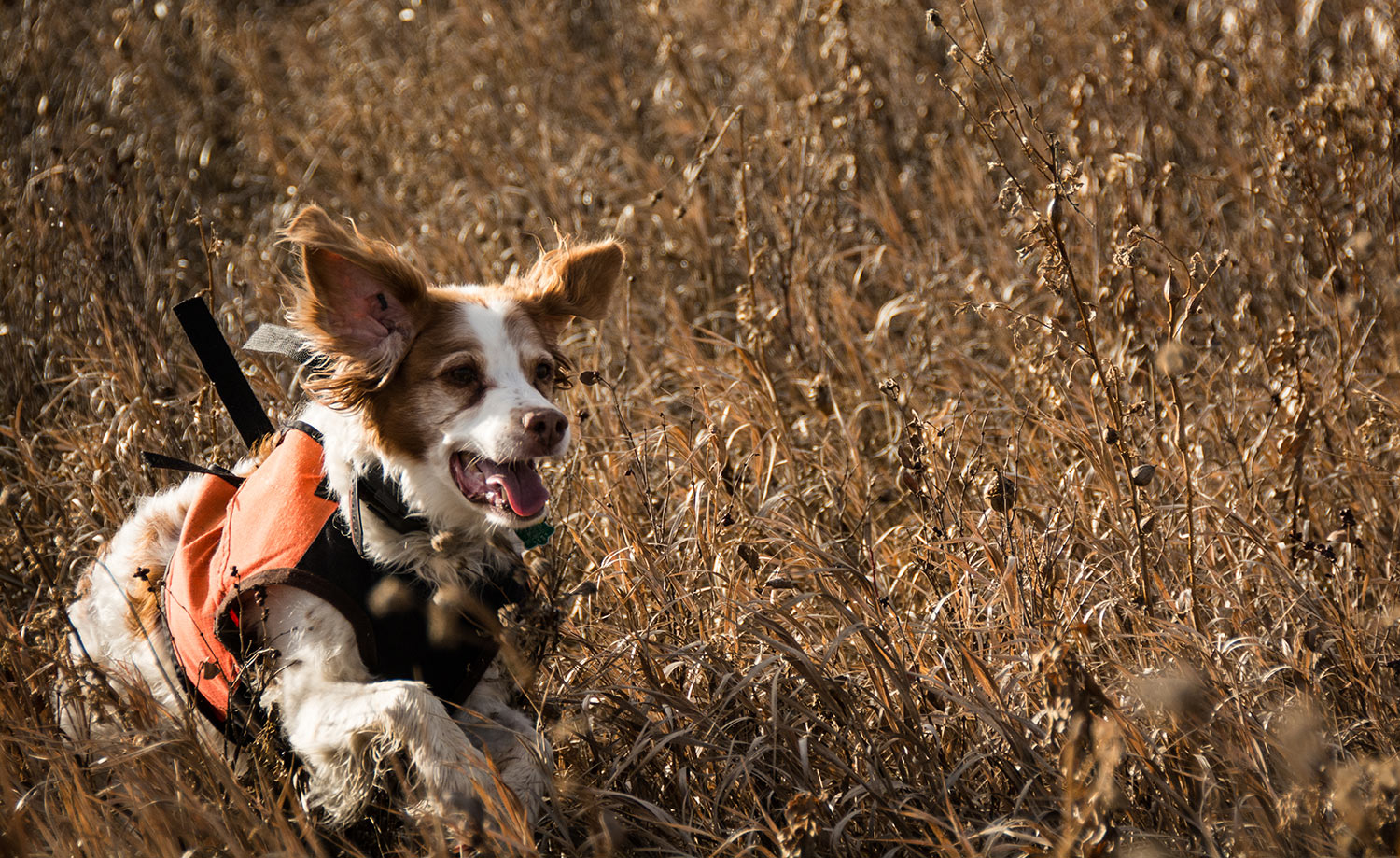
“It is easy to forget that in the main we die only seven times more slowly than our dogs,”
October has long been my favorite month. I’ve frequently thought it odd that a time which feels like a beginning to me, is really the beginning of the end. This year especially, as I say a long goodbye the best dog I’ve ever known,
This piece by Greg McReynolds, on Mouth Full Of Feathers, really hit home. If you love dogs, and brown trout and bird hunting, I’m sure it will for you too. Enjoy your October. We only get so many.
“We Only Get So Many Octobers”
Read More »New fly Rod Technology And Fly Lines From Winston
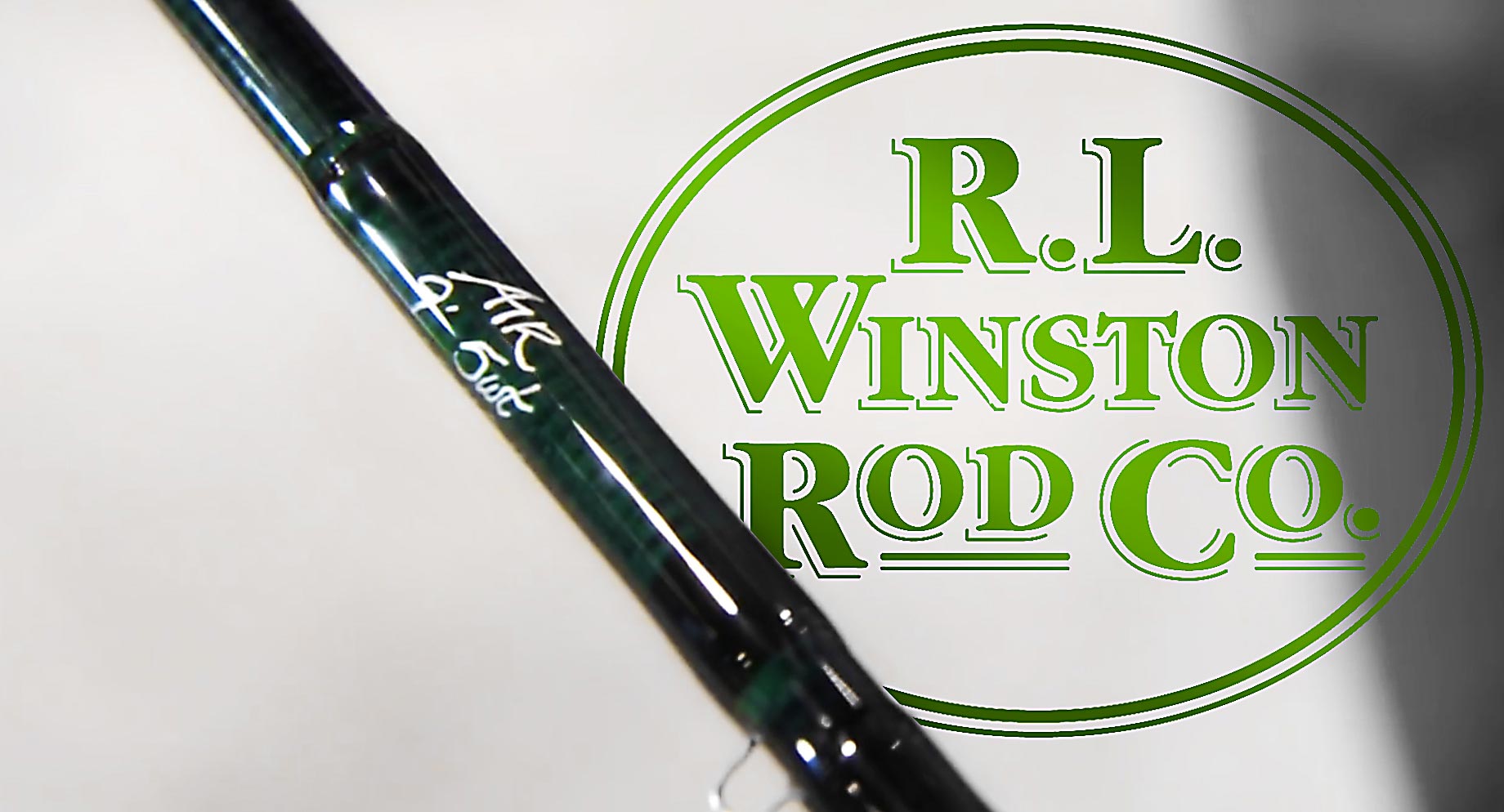
Sweet new Winston rods and for 2016 and fly lines made to match.
The new Winston Air fly rod takes advantage of new high tech resins to make a rod that’s faster and lighter. The action is familiar to the Winston fan, but definitely a step into the future. What’s more, you can buy a Winston fly line matched to your new rod. How cool is that idea? Fly lines made specifically for your new Winston fly rod. An idea so simple, you have to wonder why it hasn’t happened before.
Check out this video for all the scoop on new Winston fly rods and lines.
Read More »Carp, Enough of the Golden Bones
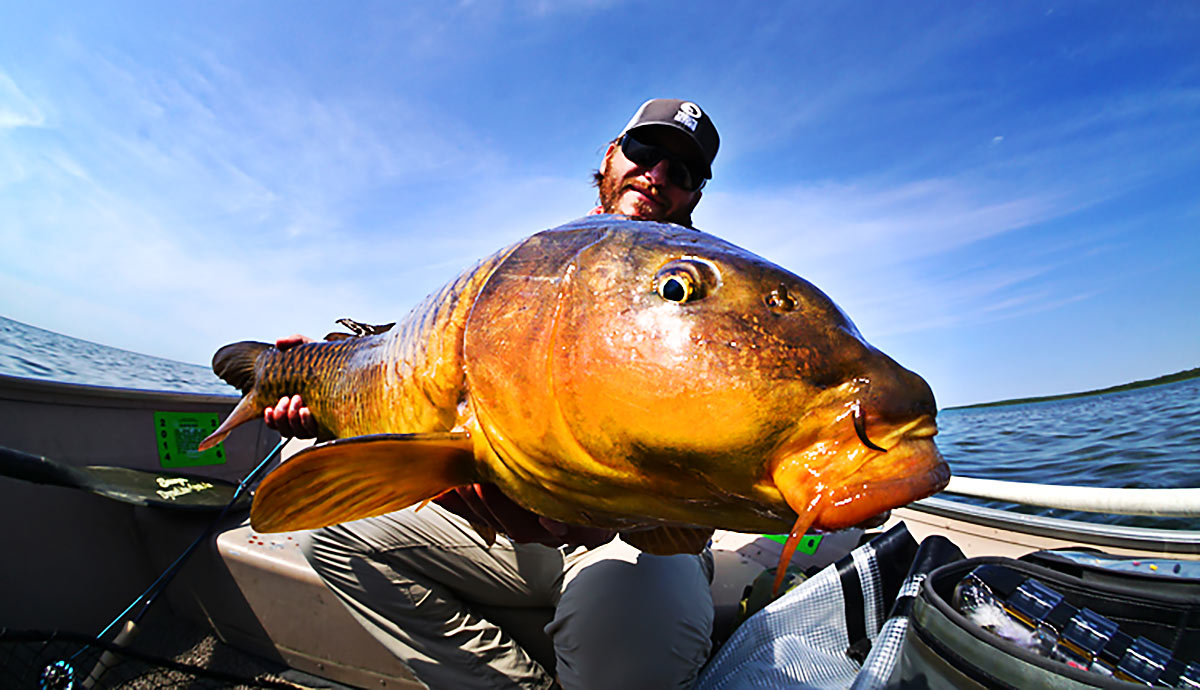
Sub-title- It’s Time to Give Carp Their Due
Some time back—I believe 15-20 years ago—anglers in Traverse City, Michigan, began calling carp “Golden Bones,” and things haven’t been the same since.
Traverse City is a big city/small town set at the end of the twin arms of Grand Traverse Bay. It is a beautiful little town that over the years has turned into a food and wine destination where even Mario Batali keeps a summer home. The bay is 32 miles long, 10 miles wide, and divided into East and West bays by Mission Peninsula. It has white sand beaches, and is ringed by farms, cherry orchards, vineyards, and almost continuous, clear, shallow flats.
In May and June those flats are invaded by large smallmouth hunting crayfish and bait fish, and giant carp by the thousand. Twenty years ago, those carp were pursued by a small but dedicated contingent of fly fishermen. Some of those fishermen were guides who saw an opportunity, but also had a marketing problem—how do you get clients to travel long distances and then shell out several hundred dollars on a guide trip, to fish for carp?
You absolutely have to see the Lake Michigan flats to believe them. If you’re picturing murky green water and casting to mud swirls you’re wrong. The water is crystal clear, at times blindingly blue, and the fish are up shallow, often tailing with their backs out of the water. Gulls and terns wheel and screech overhead, waves roll and lap, and the wind, well, it does what wind does. Put all this together with fish that can take you into your backing in seconds, and you have a situation that reminds you of, well, bonefish.
Twenty years ago carp were stigmatized as
Read More »Weather Dictates When and How I Fish My Terrestrials
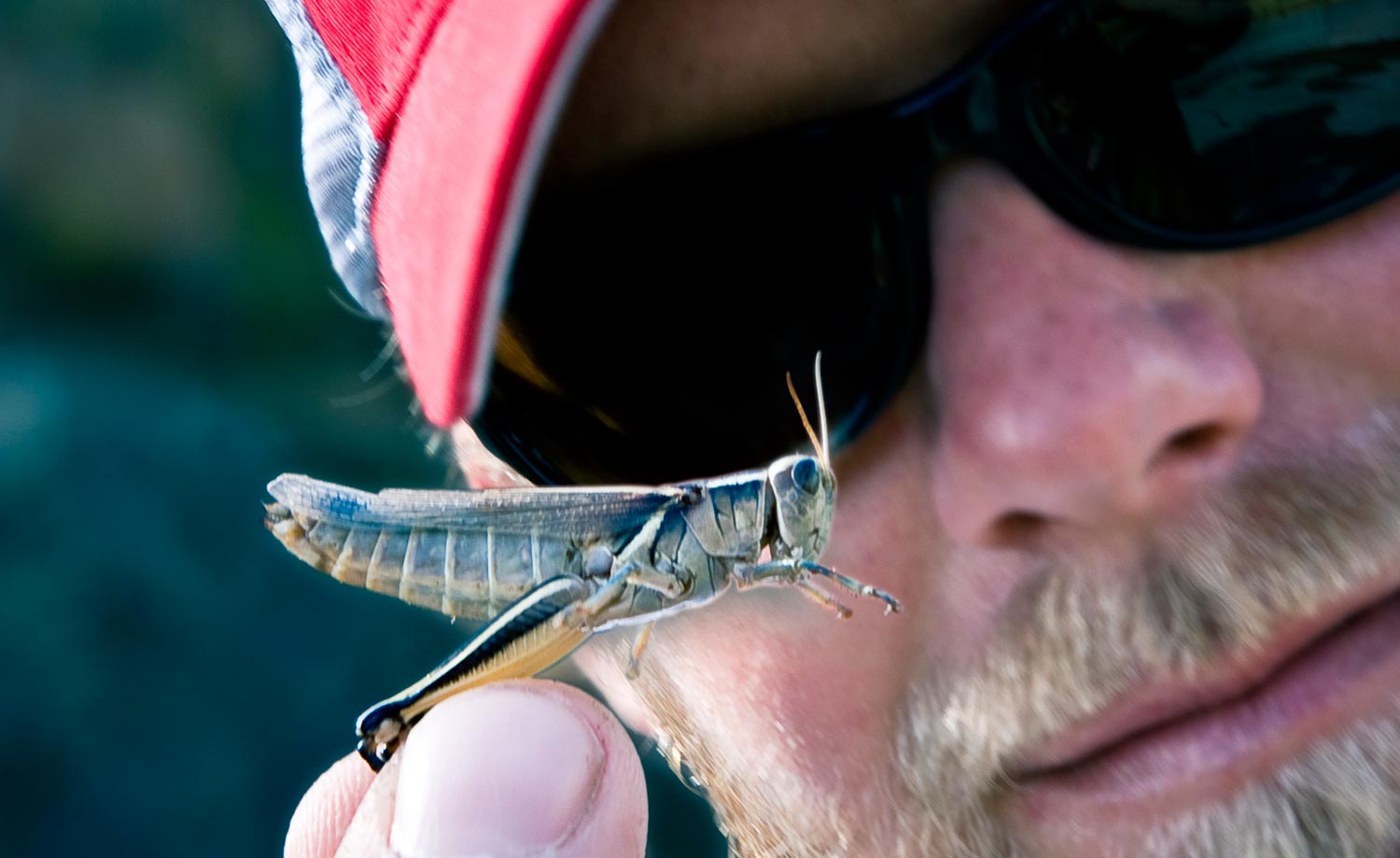
Every year, I’m asked by clients, when is the best time for them to come up and experience the terrestrial bite? For years, I kept a terrestrial fishing journal to help me better serve my clients. The journal documented the arrival times of specific terrestrials and when I first started catching fish on them. It seemed to help me for a couple seasons, but after that, I started to become too reliant on the data in the journal, and I lost sight of the most important variable of all in timing the terrestrial season–weather. Depending on what the weather is doing for the current year, it can speed up or postpone the arrival of the terrestrial season. Some years it will only sway the start of the terrestrial season a week in either direction, while other years, it can sway the arrival well over a month. Understanding the role weather plays in the lives of terrestrials can help anglers nail down more accurately when the terrestrial season will begin and peak in their area. If you can be one of the lucky few to time and start fishing terrestrials before everyone else does, you can be rewarded with some of the biggest fish of the year.
THE EFFECT WEATHER HAS ON TERRESTRIALS
Having consistent warm weather is a major factor in the arrival of terrestrials. Cold nights during late spring will keep terrestrials hiding in their burrows and out of sight during most of the day. During years when these cold snaps linger on, it will delay the arrival of the terrestrial season significantly. Sun is a major player in getting the terrestrial fishing going as well. I’m not 100% sure of this, but I think once the rainfall drops off in the summer, and the hot sun sucks out most of the moisture content found in the plants that the bugs are eating, the terrestrials are eventually forced to search out food sources that have a higher moisture content. It makes since to me at least, that the best places for the bugs to find moisture rich plants during the heat of the summer would be around water. All living things, including terrestrials, need water to survive. Furthermore, sun is the fuel for plants to grow, and many of our streams and rivers have large amounts of flowers that bloom (late spring, early summer) along the banks that provide food (nectar) for terrestrials. During above average rainfall years, where you’ve got more cloudy days than sunny days, it can inhibit or postpone the growth and blooming of these flowers that attract the terrestrials, and therefore, they won’t be attracted to the water and available to the trout. So when you’ve got a really wet spring and summer you can expect the terrestrial season to be late. It’s important to note also, that years with high rainfall, will significantly increase the water levels on our trout waters and postpone the terrestrial bite. Too much rainfall will keep the bugs from showing up, and raise water levels, which will discourage trout from expending the energy to rise to the surface to eat them, particularly if there’s sufficient food below the surface for the trout to eat. High water also flushes out terrestrials much quicker than during average water flows. You won’t find terrestrials swirling around in eddies for long periods of time.
WHERE TO FISH YOUR TERRESTRIAL PATTERNS FIRST
Read More »How Steelhead Rely On Rainbow Trout To Survive
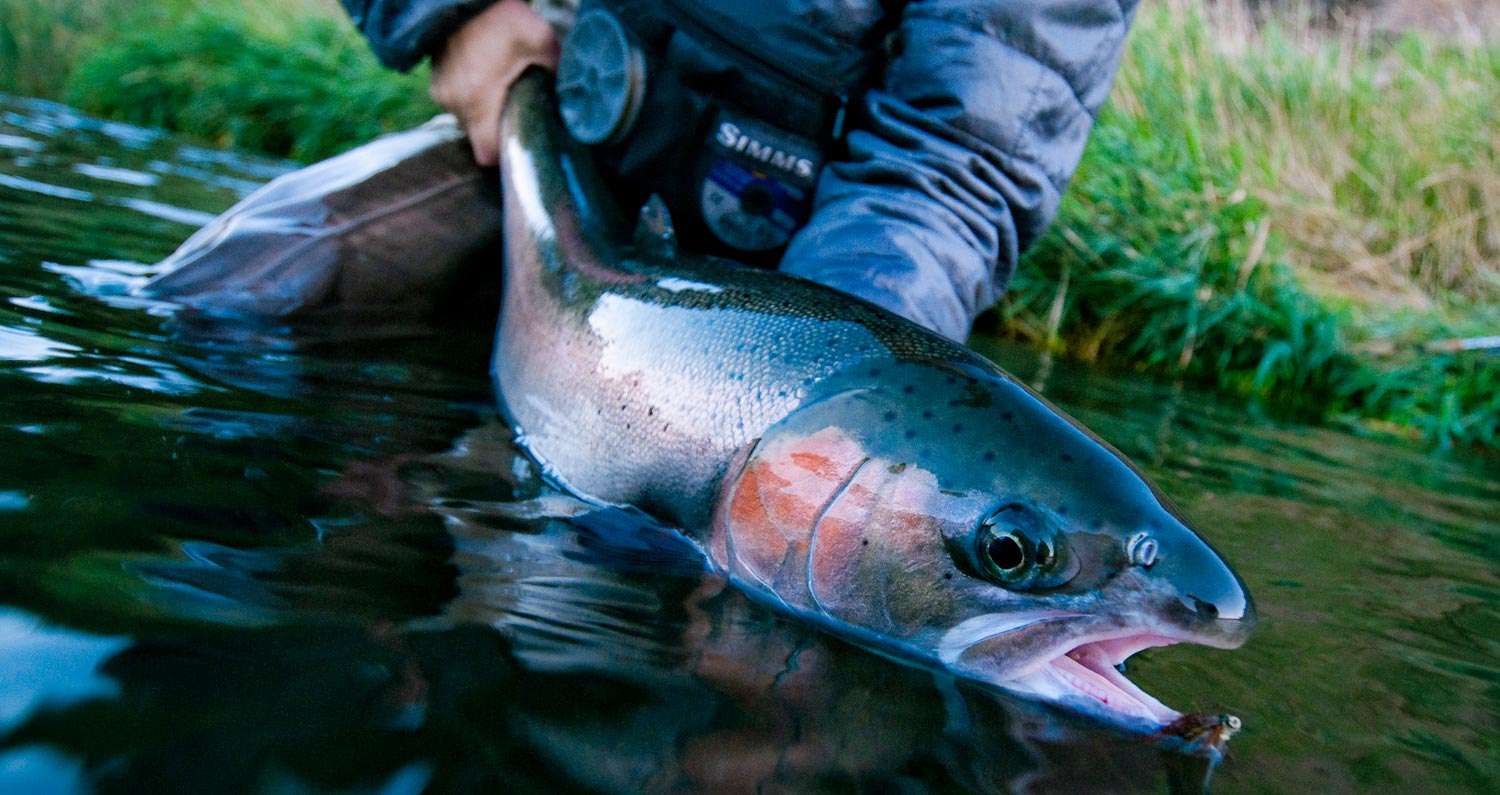
The relationship between Steelhead and resident rainbow trout is one of the most fascinating in nature.
There is, of course, a huge argument between anglers over the nature of steelhead and trout, which brings with it a fair amount of animosity. The fish themselves, however, apparently have no such prejudice and it turns out that steelhead anglers owe a great debt to the resident rainbows. Without those trout, we would likely have no steelhead left.
Steelhead and rainbow trout are genetically identical. There is no debate over this, it’s a fact. The two are separated by behavior only. If a trout runs to the ocean and matures there, they are considered a steelhead. If they stay in the river, they are a trout.
There is an interesting thing which happens in the selection process. Whether or not a fish migrates to the salt is determined by the rate at which they grow, which is determined by their individual metabolism as well as environmental stimuli. If a fish develops a certain amount of fat by a given age, hormones are triggered which tell the fish to stay put in the river. This is generally the case with fish who have slower metabolism and abundant food. Those fish will be resident rainbow trout.
On the other hand, fish with higher metabolism, who burn calories rather than convert them to fat, will go to the ocean for its abundant food sources. Those fish are steelhead. Perhaps the higher metabolism is responsible for their natural athleticism and power, as much as their ocean environment. Either way they are a truly special sport fish.
Another interesting component in the mix is that the males are the fish which show plasticity. That is to say that a female born of a steelhead female, will be a steelhead, where as a male may become either steelhead or rainbow.
This is not simply a coincidence. It’s the key to the survival of the species.
Read More »Sunday Classic / Tying On The Road
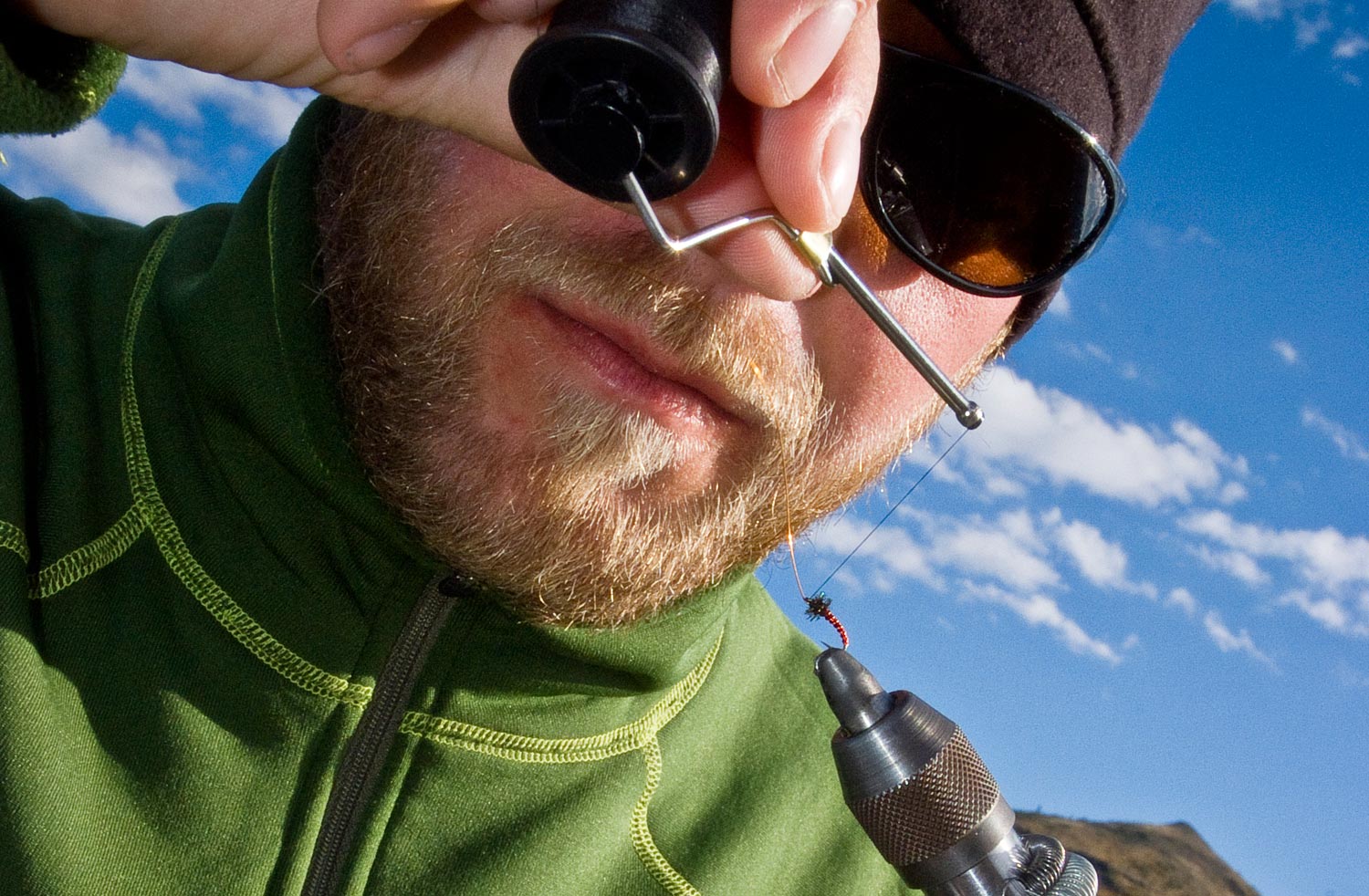
When Kent and I hit the road for a Gink and Gasoline outing, among the pile of rods, waders, cameras and Cliff Bars there’s always a canvas tool bag stuffed to the gills with feathers and fur. It’s generally a ridiculous amount of materials. Way more that we could ever use. Everything we need to tie a thread midge or a streamer that looks like something Elton John wore in the 70s.
I don’t care how well you plan for a trip you always need just one more of that hot fly. Maybe there’s an unexpected hatch or maybe a sudden inspiration. In any case that bag of feathers has saved more than one trip.
I’ll never forget a subfreezing night we spent in a fish camp on the White River in Arkansas tying shad patterns. We would tie a fly, bundle up and scramble out to the river to try it out
Read More »Saturday Shoutout / No Longer America
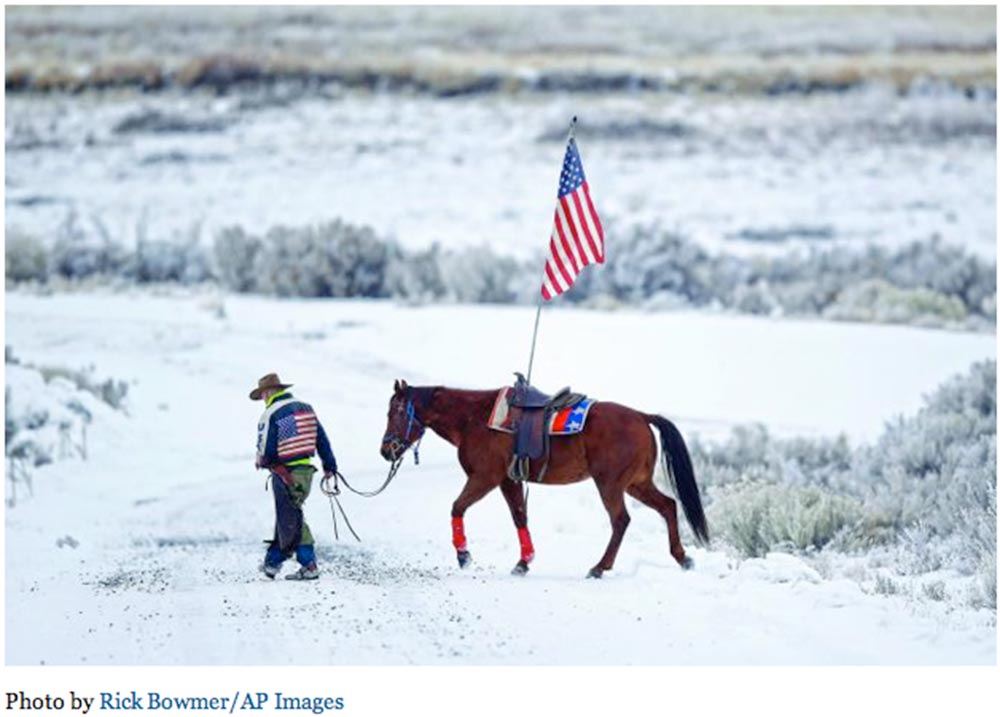
“America without public lands is no longer America.”- Randy Newberg
“Transferring Control of Federal Lands Would Devastate Hunting and Fishing” That’s the headline of this of Hal Herring’s detailed and passionate article in Field and Stream. This is the best piece I’ve seen written on this desperate subject. Please read it. If you are sick of hearing about public lands, or have made up your mind, definitely read it.
We are in grave danger of losing our public lands. If you have come to this site, this is a subject you should be involved in. We have one best chance to save the public lands we love and it’s Tuesday November 8th. Vote these crooks out of office. Get informed and get involved.
READ THIS ARTICLE!
“TRANSFERRING CONTROL OF FEDERAL LANDS WOULD DEVASTATE HUNTING AND FISHING”
Read More »